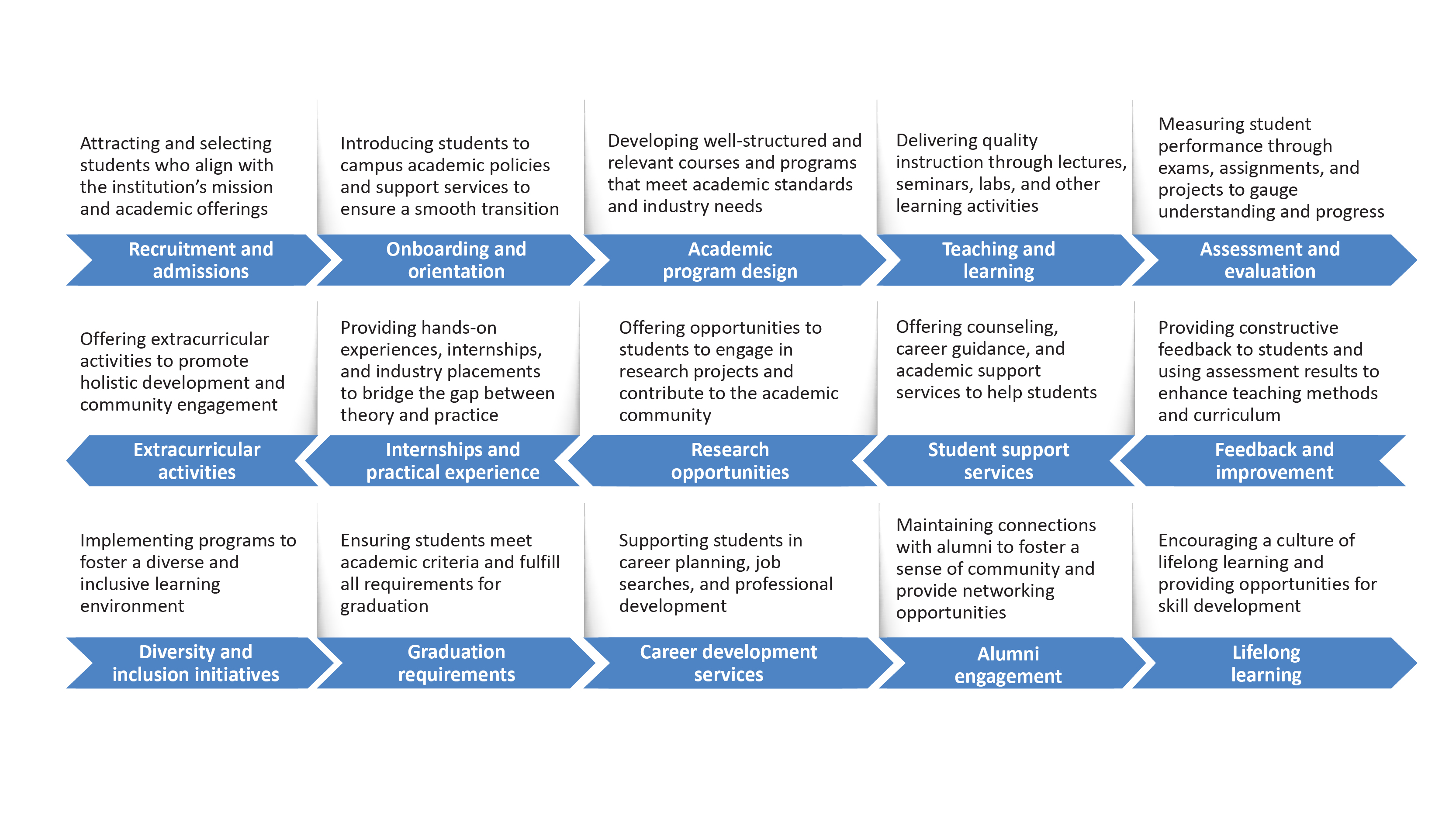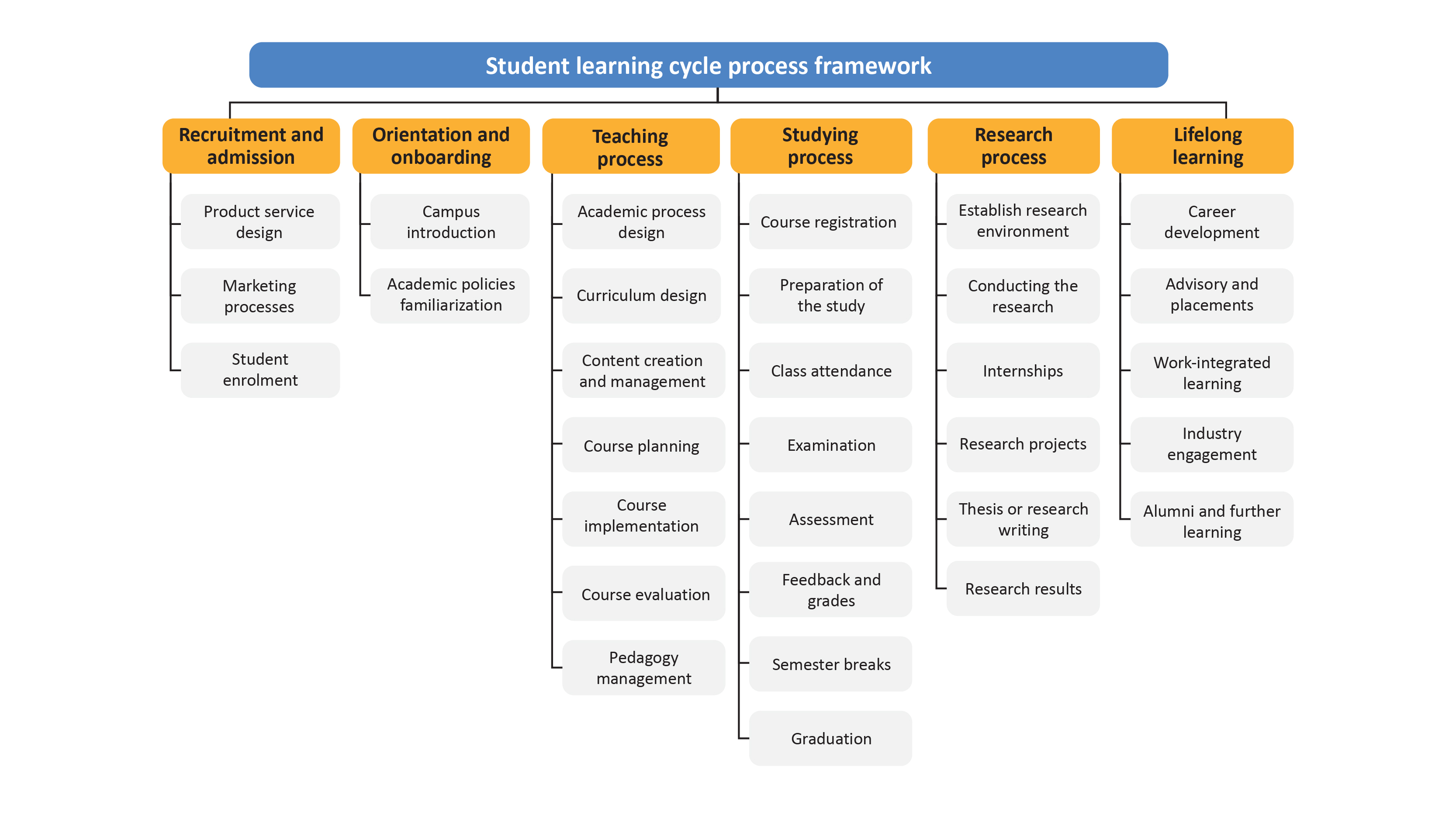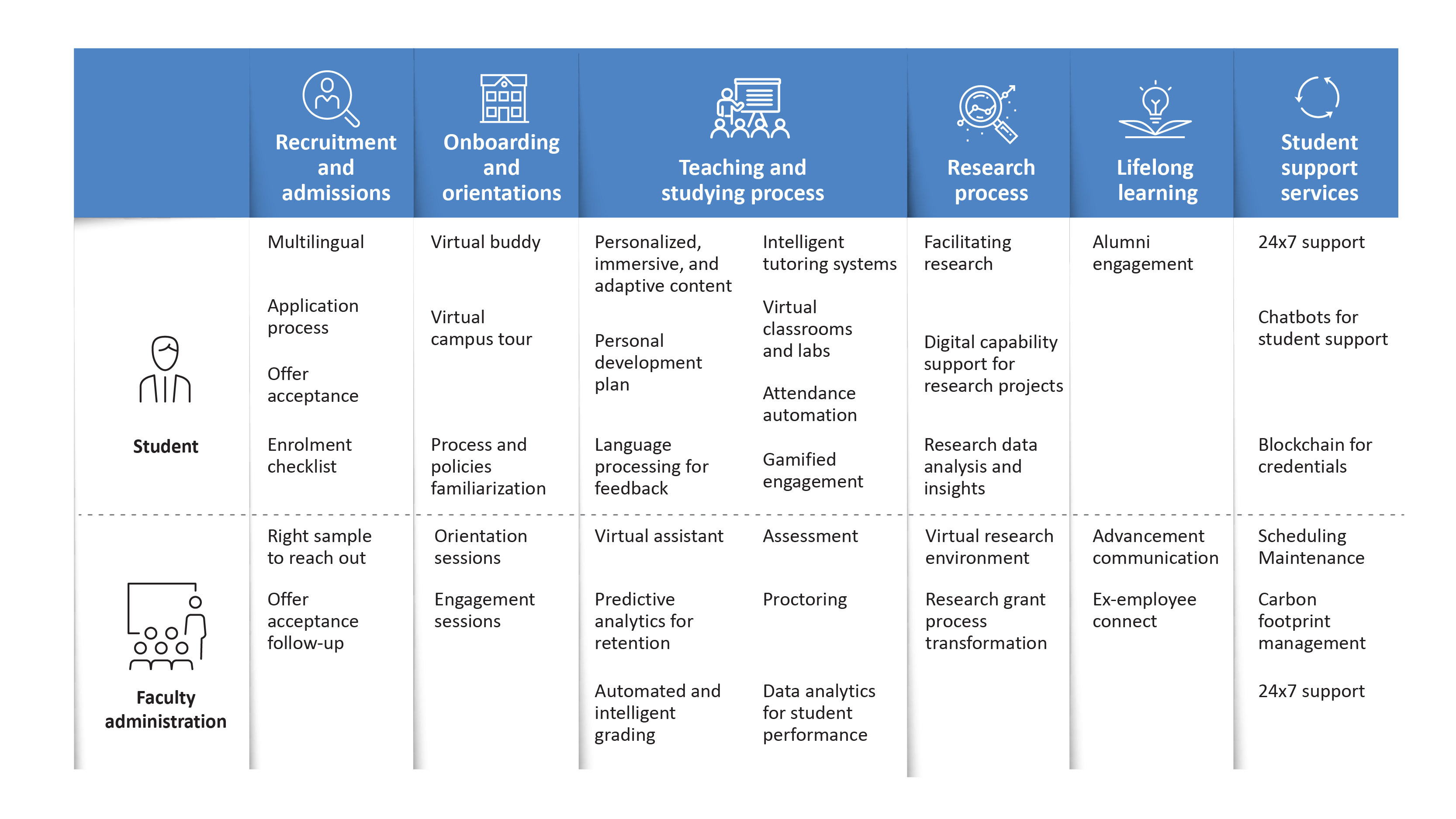Industry
HIGHLIGHTS
- Educational institutions are undergoing a sweeping digital overhaul, affecting core areas such as enrollment, student lifecycle management, backend ERP, learning management, assessment and proctoring, and infrastructure networking.
- This transformation requires a holistic approach, blending technology with pedagogy. Effective collaboration between education experts, IT professionals, and administrators is critical to navigating these challenges.
- As the education system evolves, AI will enhance capabilities across learning and operational processes. From personalized learning to intelligent assessment systems, AI is reshaping how students learn and institutions function.
On this page
A seismic shift in education
The global education sector is undergoing a seismic shift, with artificial intelligence at the helm of this transformation.
Catalyzed by the COVID-19 pandemic, educational institutions are undergoing a comprehensive digital overhaul, encompassing various aspects such as enrollment, student lifecycle, learning and alumni management, backend ERP, assessment and proctoring, and infrastructure networking, among others.
However, institutions are at varying stages in their digital transformation journey. Despite substantial investments in technology, challenges remain in optimizing teaching and learning processes, necessitating continued innovation and refinement to realize the complete benefits of digital transformation.
Addressing these challenges requires a comprehensive and strategic framework for technology integration, which incorporates a thorough needs analysis, resource assessment, and engagement with relevant stakeholders.
The exponential growth in computational power and data availability has catapulted artificial intelligence (AI) and machine learning (ML) to the forefront as primary growth drivers, particularly in the education sector. AI's capacity to analyze vast datasets, identify patterns, and provide personalized learning experiences is transforming education, rendering it more effective, inclusive, and student centric.
Following the paradigm shift toward blended models, hybrid learning, and fully online education, we have entered an era of generative AI and AI-driven education. The education sector should proactively embrace AI as a key enabler to deliver high-quality, affordable, equitable, and personalized education that prioritizes individual students' needs, leading to enhanced learning outcomes and improved academic achievements.
Market view of AI in education
Looking at specific technologies, educational institutions have made notable progress in embedding AI into their operations.
ML adoption leads the way at 38%, followed by 29% for natural language processing (NLP), and 24% for computer vision technologies.
Analytics and NLP are perceived as the most impactful, driving intelligent adaptive learning solutions. Intelligent adaptive learning is a disruptive technology backed by AI that personalizes teaching based on students' learning preferences, knowledge, and progress.
Building on this advancement, the following industry trends in AI are further transforming student learning by leveraging data-driven insights and automation.
Enhanced teaching efficiency through automation: AI automates administrative tasks such as grading and lesson planning, freeing educators’ valuable time to focus on high-impact activities like personalized instruction and student engagement.
Data-driven decision-making in student learning: AI-driven analytics empower educators to make informed decisions regarding curriculum development, resource allocation, and instructional strategies. AI tools help identify patterns, trends, and learning gaps, enabling targeted interventions.
Demand for intelligent tutoring systems: AI-powered one-on-one tutors provide personalized, one-on-one support, adapting to individual learning styles. This customization enhances student outcomes by creating a more efficient and tailored learning experience.
AI-driven virtual and augmented reality in student learning: AI, combined with VR and AR technologies, creates immersive and interactive learning experiences. AI algorithms provide real-time feedback for optimizing learning outcomes.
Adoption of intelligent and adaptive testing: AI-based assessments reduce reliance on standard tests, offering a more accurate representation of students’ abilities. This shift promotes a more inclusive evaluation process.
The figure below outlines five key AI in education industry segments – component, technology, deployment, application, and end use.
Leveling the playing field
One key advantage of AI is its ability to cater to individual learning styles, making learning more accessible.
AI-driven solutions enable students to learn based on their natural strengths and abilities. For instance, AI tools such as ChatGPT allow students with dyslexia or attention deficit hyperactivity disorder to reformat intricate text into bulleted lists, improving comprehension and retention.
Visual learners benefit from AI platforms like DALL-E, which generate infographics and images that simplify complex concepts. This capability ensures that every student can take greater control over their educational journey, regardless of learning needs.
Integrating AI into existing learning technologies can further amplify these benefits. AI-powered analytics, intelligent monitoring, and immersive content offer smarter ways to provide real-time feedback and track learning progress.
By exploring opportunities for deeper integration into everyday educational tools, both teachers and students stand to gain from AI’s transformative potential.
AI’s role in higher education’s learning value chain
In higher education, the student learning value chain consists of several vital stages contributing to the learning experience.
Here’s a breakdown of the higher education student learning value chain.
Technology, particularly AI, serves as a catalyst for transformation, driving innovation and improvement at every stage. Institutions leveraging AI can enhance access to digital resources, continually refine the quality of learning and student support services, and ultimately boost student outcomes.
AI also opens new possibilities for enhancing the overall student learning cycle. A critical use case is dropout prevention, where AI-driven predictive analytics can help identify students at risk, enabling proactive interventions to support academic success.
Typical process areas in the higher education student learning cycle are:
AI is also accelerating the proliferation of quality education in remote areas. In developing countries, technology can further leapfrog the quality and reach of education (especially in K12) and help create an equitable ecosystem. In developed nations, AI is enhancing efficiency and reducing the cost of education, directly addressing dropout challenges.
Barriers to AI adoption
The challenges posed by AI adoption in the education sector require a strategic, holistic approach.
This involves combining technological solutions with pedagogical strategies and collaboration between education experts, IT professionals, and administrators.
As educational institutions increasingly rely on digital platforms, ensuring the security and privacy of sensitive student data becomes critical. With rising cybersecurity threats and stringent privacy regulations, safeguarding student information must be a top priority.
AI-based cybersecurity solutions can significantly enhance data security measures while ensuring adherence to privacy regulations. A vigilant, proactive approach is essential to mitigating potential risks, thereby upholding the confidence of students, parents, and other stakeholders.
Striking a balance between leveraging technology for efficiency and maintaining the value of personal interaction in education is key. AI-driven virtual assistants and chatbots can provide instant support to students, addressing queries related to coursework, scheduling, and technical issues.
However, maintaining consistency in teaching styles, content quality, and the overall experience of online education is essential. AI-powered language processing tools can enhance online content, making it more accessible and comprehensible for diverse students.
While AI has the potential to resolve many of these challenges, it also comes with increased financial demands. Implementing and maintaining advanced AI technologies can be costly, particularly for smaller institutions with limited budgets.
In a world where AI is becoming integral to daily life, its role in education is indisputable.
What’s next
As AI continues to evolve, AI-powered technologies such as adaptive learning and intelligent tutoring will strengthen the education ecosystem.
AI is poised to revolutionize teaching methods, improve administrative processes, and enhance student experience. However, thoughtful implementation is crucial. Ethical considerations, privacy concerns, and the preservation of human interaction in education must be prioritized to ensure a balanced coexistence of technology and traditional educational values.
The major technology players and service integrators are actively developing AI services, setting the stage for continued innovation in education. By carefully navigating the opportunities and challenges AI presents, institutions can drive meaningful transformation without losing sight of the human element that remains central to education.



